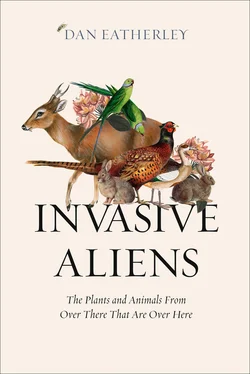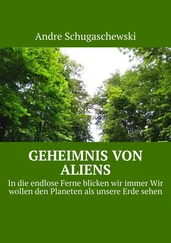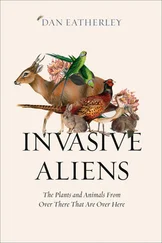1 ...6 7 8 10 11 12 ...17 But, for me, Liddell’s most important discovery at Hembury were some charred grains of spelt, an ancient form of wheat. Carbon dated at roughly 5,000 years old, these represent some of the earliest archaeological evidence for the cereal anywhere in Britain. Liddell also turned up stone querns for grinding the crop into flour. Evidence of the importance of cereals in the diet of Hembury’s Neolithic occupants was bolstered by the later discovery of 13 impressions of wheat grains embedded within some of the Neolithic ceramics.
How and why did a food plant native to the Middle East – 3,500 kilometres distant – come to be eaten atop a windy promontory in southwest England? The answer lies much further back in time.
Some 23,000 years ago, while Britain and the rest of northern Europe was gripped in an endless winter, people basking in the more benign climate of the eastern Mediterranean were gathering, grinding and cooking the grains of wild wheat, barley, oats and other grasses. It’s possible that the most far-sighted and patient among them may have planted out some of their seeds and waited to harvest a crop. The evidence for such an innovation back then is patchy, but certainly by around 12,500 years ago farming communities had materialised across the region.
The specifics of the transition from restless nomadism to a sedentary way of life based on cereal cultivation are still to be understood, but the shift is remarkably well documented in the Natufians, a people whose settlements are scattered across what is today Israel, Palestine, Jordan, northern Syria and southeastern Turkey. From about 14,500 years ago they started exploiting wild grasses such as emmer wheat and barley to make flatbread, beer and, later, animal feed. The transition from hunter-gatherer to settled farmer was by no means simple and direct. For some reason, the Natufians, having earlier taken up agriculture based on the intensive harvesting of wild grains, decided to resume a more mobile existence around 12,800 years ago. This about-turn has been linked to a colder period known as the Younger Dryas that reduced the natural availability of wild cereals in the Mediterranean region, forcing people to keep moving to fill their bellies.
Eventually, the Natufians and others returned to the cultivation of cereals. By selecting varieties with the greatest yields, or those which thrived in diverse conditions, crops were gradually domesticated. Early agriculturalists benefited from a common mutation in wild wheat and barley that causes the grain-carrying spikelets to be more tightly gripped to the plant after ripening – just when they should be releasing them. In wild conditions, these ‘non-shattering’ mutants are at a competitive disadvantage compared to normal grasses which can spread their seed far and wide, but they lend themselves to being harvested and cultivated by humans. People learned to exploit other plants too, including flax, pea, chickpea, lentil and bitter vetch, intentionally planting, tending and harvesting them.
Scientists wonder whether the timing of this shift to crop domestication, which probably occurred independently in different places across the Fertile Crescent – as well as in parts of eastern Asia where wild varieties of millet and rice were the grains of choice – might not be a coincidence. One suggestion is that as the climate warmed at the end of the last Ice Age, and sea levels rose, so people were forced to higher ground where they would have encountered wild wheat and barley growing naturally. Levels of carbon dioxide were also increasing in the atmosphere – possibly due to its release from warming oceans – boosting worldwide plant production, including grasses such as cereals, and kick-starting what is often called the Neolithic revolution.
With the right kind of seeds, well-prepared soil and a favourable climate, the pioneer farmers soon found themselves amassing more food than they needed. This calorie boost, combined with a reduction in energy spent moving around, is thought to have ramped up human reproductive rates. A population boom led to civilisations across the Fertile Crescent, an 800-kilometre arc of territory encompassing the floodplains of the Nile, Tigris and Euphrates. But the discovery of farming may have set off a vicious cycle: the more people bred, the more food was needed and the harder everyone had to work. If they didn’t want to, or couldn’t, they might cheat or steal, requiring strong laws and even stronger rulers to keep the peace. Of course, there was nothing stopping rulers themselves from hoarding food and growing their own power in the process. At the same time, more and more of the landscape was turned over to crops which meant an acceleration in deforestation, erosion and other varieties of environmental degradation.
Unsurprisingly, given its peripheral location and challenging climate, Britain wasn’t an early adopter of agriculture. By the time wheat and barley made their appearance here some 6,000 years ago – and those precious spelt grains were being hoarded in a primitive hut on Hembury hill – the world’s first city of Uruk was already rising from the Mesopotamian floodplain. The farming of livestock also appeared in Britain, and the rest of northern Europe, around this time, again having been pioneered long before in the Middle East.
Goats and sheep are believed to have been domesticated from their wild ancestors – bezoar and mouflon, respectively – across southwest Asia from about 11,000 years ago. These low-maintenance creatures, compatible with a semi-nomadic lifestyle, were probably first kept for their flesh alone, and only later used for milk, wool and other secondary products. The fertilising properties of livestock manure was also noticed and exploited. Despite their benefits, sheep and goats would go on to become among the world’s most destructive invaders, especially on islands where their relentless chomping wipes out rare plants and degrades ecosystems. Indeed, their unfussy diet, their rapid reproductive rate, their tolerance of a breadth of environmental conditions – the very traits which first drew us to them and of course to so many other problematic species – go a long way to explaining their world domination. At the last count, two billion sheep and goats roamed the planet.
Around the time that people first domesticated sheep and goats, cattle also joined the ranks of tamed ruminants. Cows were descended from the extinct wild ox, or aurochs. This was a spectacular beast, particularly the bull which stood nearly two metres high at the shoulder and sported fearsomely curved horns. Unlike the bezoar and mouflon, aurochs were already present in post-glacial Britain – indeed, they roamed the entire Eurasian landmass; however, domestication probably occurred in the Middle East. That’s because early cattle were much smaller than our native aurochs, and DNA studies show that modern cows, including British ones, are genetically closer to Syrian aurochs than home-grown ones. In fact, today’s entire global cattle herd – numbering some 1.5 billion cows – is believed to be descended from a founding stock of just 80 animals, likely to have originated in the Middle East. There’s a good chance, however, that hybridisation would have occurred between local British aurochs and the smaller incoming cattle. Neolithic farmers may not have been thrilled about this: their petite cows, bred for milking, may have risked serious injury when attempting to birth an outsized hybrid calf.
Other modern domesticates with native British versions also seem to have derived from imported stock. These include the pig, whose ancestor, the wild boar, was widespread here before the advent of agriculture. Porkers are thought to have been first farmed in the eastern Anatolian region of modern-day Turkey about 10,000 years ago – along with a later independent domestication event in central China – and descendants of these Anatolian versions were subsequently brought to Britain. As with cattle, the amount of wild boar DNA in the genome of domestic pigs suggests frequent hybridisation between the two. To an extent, this may have benefited pig farmers, as crossbred versions may have been better suited to the more bracing local conditions in Britain, although too much of the ‘wild’ in a pig could make it a handful. A balance had to be struck.
Читать дальше











